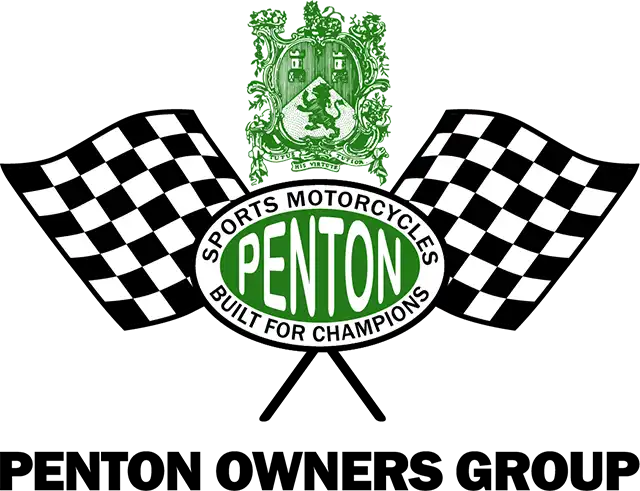Steve Wise
by Ted Guthrie
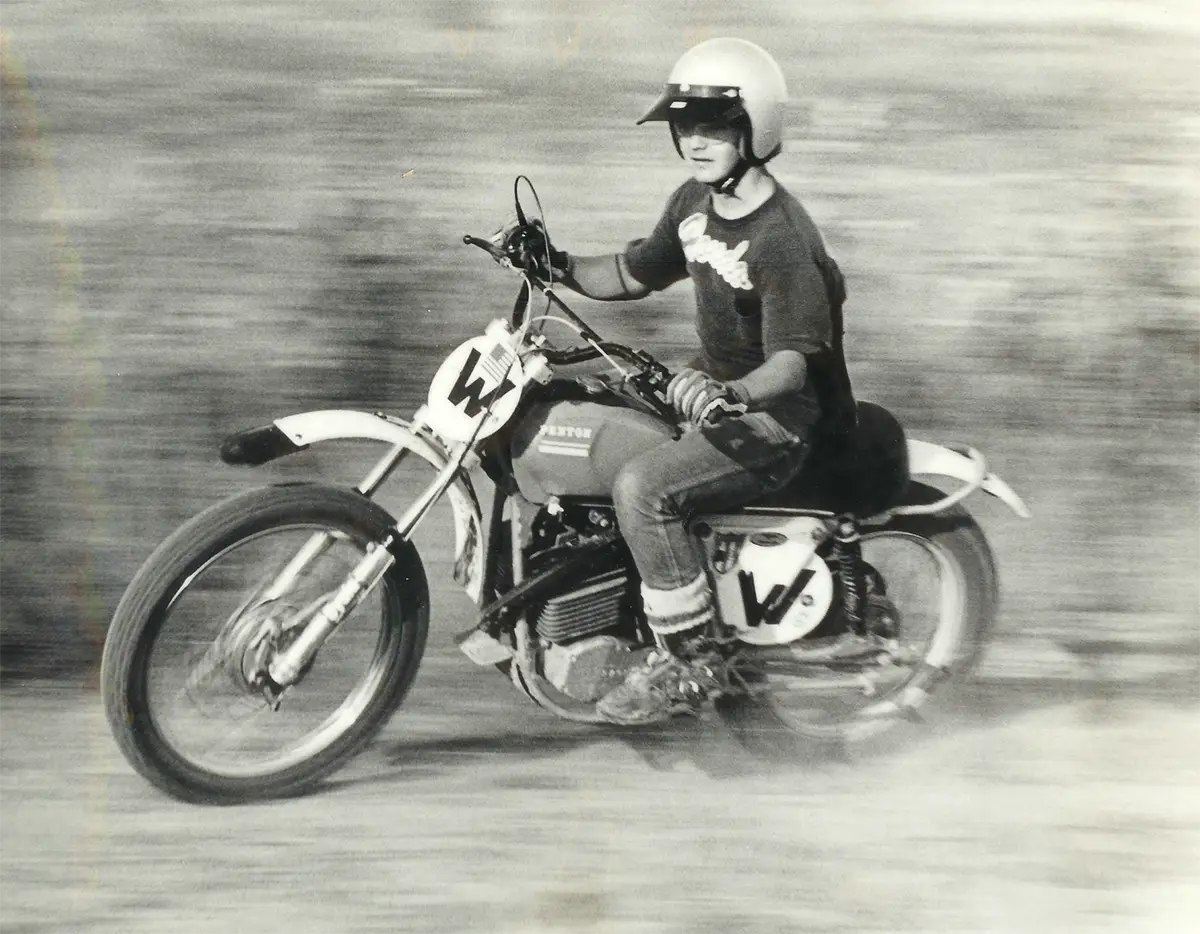
Motorcycle racing is a very specialized sport, and within it are numerous individual disciplines. To succeed in any one category requires the utmost in talent, courage, athletic ability, dedication, and skill. This is particularly true at the professional level, where only the best reach the top. Very seldom, certainly in the modern era, does a rider come along who manages to excel at more than one form of two-wheeled competition throughout his or her career.
One of those very few, exceptionally talented riders, is Texan, Steve Wise. Steve was born June 2nd, 1957, in the town of McAllen, located at the very southern tip of the Lone Star state. The area around McAllen was then known as a sportsman’s paradise, and father Gary was a highly enthusiastic rider. Steve grew up with a series of Bultacos and Triumphs in the garage, and then when he was 12, Steve’s father bought him his own bike, a used Honda CL90. With miles and miles of open trails just one block from his home, Steve took to riding every day.
About this time, some of the first motocross races began to be held across the U.S. Steve’s father took him to see such stars as Sylvain Geobors, Ake Johnsson, and Roger DeCoster compete in the early Trans- Am races at MX tracks in Conroe and at the popular Houston track, Rio Bravo. Steve was immediately caught up in the action and excitement of motocross racing, and wanted badly to compete.
At the tender age of 14, Steve made his racing debut, on a Honda SL100 four-stroke. In that first race, Steve finished in third place, which is especially impressive considering that from day one, he always competed in the “money” class. The Wise’s outlook on racing was that it was going to be all or nothing. Of his first taste of competition, Steve remembers little except for the two motorcycles, which finished ahead of him that day. At the time, he was not familiar with the green bikes, or with the name on their fuel tanks – Penton.
As a very successful real estate broker and a savvy businessman, Steve’s father saw great opportunity in the fast-growing sport of motorcycling during those years, and so decided to open up a Honda dealership in McAllen, Texas, “Honda of McAllen.” With support from his father’s shop, Steve moved up to the 125 Expert class, on a considerably modified Honda SL125. On it, he began consistently winning local races, despite heavy competition from riders on more race-ready machinery, such as the first YZ Yamahas and TM Suzukis. In fact, such was the lack of parity in equipment that it was all Steve could do to hold off the two strokes.
Considering Steve’s obvious talent, his father was intent on providing him with the best, most competitive equipment possible, and soon began looking to add another brand to his line of Honda motorcycles, just for the purpose of Steve competing in the sport of motocross. Other dealers in the area already offered Yamaha, Kawasaki and Suzuki products, so several other manufacturers were considered. These included Husqvarna, Sachs, DKW and Hodaka, but Mr. Wise finally decided on the strong-running and reliable Pentons.
His very first ride on a Penton was at Botts Motocross Park, in Harlingen, Texas, where Steve won easily. From that first ride, on a ’72 125 Six-Day, in Steve’s words, “It was all over for those other guys in Texas, no matter what they were riding.” Steve and his father started traveling to tracks all over the state, where Steve would win consistently and convincingly – often by a half a lap over second place. Steve was so fast on his Penton that he was virtually untouchable throughout the great state of Texas.
In addition to Steve’s tremendous speed, another key ingredient to his success was the performance and reliability of his Pentons. Rather than radical modifications, the bikes were instead just carefully prepared, with select, practical alterations. Koni shocks were used, with 60/90 springs, and Akront rims. The stock pipe’s tip was removed, and a Skyway silencer attached to the stinger. At first, Steve’s shop didn’t even bother to port the engine, as the bikes were plenty fast. However, they did fit a 30mm Mikuni carb, which improved the power tremendously as well as limiting the “loading up” problem of the Bing. After the Mikuni fell off once, with its rigged-up, rubber hosemounting arrangement, Steve’s father took the carb to a local machinist and had the Mikuni milled to the same size as the Bing to fit directly onto the cylinder’s manifold intake. Steve believes this one modification added some 5 horsepower or more to his Penton. In regard to appearance, Steve ran the small, Penton mx tank, painted blue. Also, white, plastic, Preston Petty fenders, handlebars to suit his preference, Uni-levers, and most memorable of all – instead of conventional racing numbers – the letter “W” on the Penton’s number plates. Many a motocross competitor throughout the state of Texas became very familiar with those “W” plates, seen most often as they were being passed, out on the track.
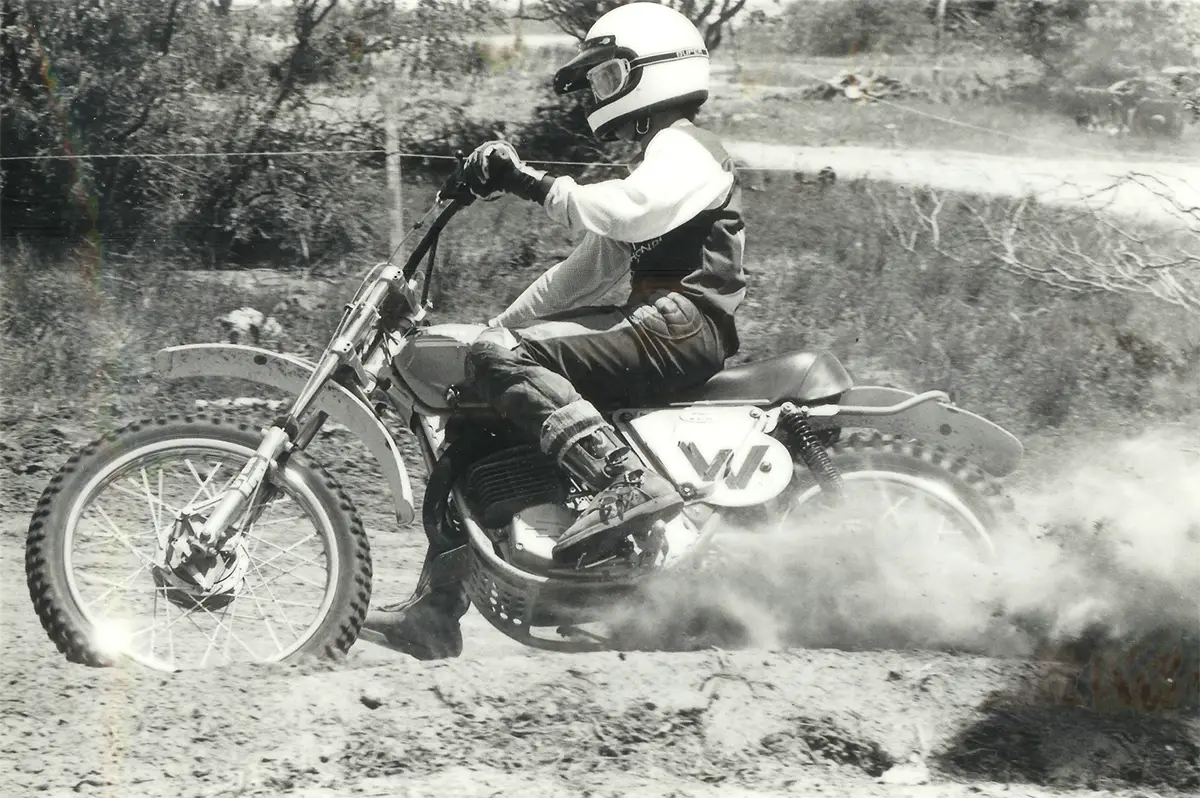
Steve actually competed on about 15 to 20 successive 125 Six-Days within a two-year span. Considering the purported shifting difficulties associated with Sachs engines as the shifting pin wore, Steve’s father decided on a more practical plan. Instead of replacing the pins, he would instead regularly have a fresh Six-Day uncrated for Steve so that his race motors were never touched.
With his father’s plan for a more reliable motor Steve would usually have a new Six-Days every one or two months. Plus, Steve’s used race bikes were always much sought-after, and Mr. Wise never had any problems selling them – and at a nice profit.
Steve’s only real competition throughout his home state was another young Texan, by the name of Kent Howerton. Kent was fast, but Steve recalls besting him most of the time when they competed against one another in the 125 class during this period. Steve also competed south of the border quite often, and was several times the Mexican National Motocross Champion.
By 1974, after some two years of successfully campaigning his Penton 125’s, Steve began riding the 250 class as well, on Hondas, as by now the CR250 Elsinore had come on the scene. In his first year on the 250’s, at age 16, Steve won the Texas Motocross Series 250 class, competing against such established pros as Gary Jones and Jimmy Weinert. This success led Steve and his father to begin traveling, and entering select national motocross events, where Steve finished in the top ten his first few times out. While racing local Texas events Steve continued to compete in the 125 class on his Pentons, as well as riding Elsinores in the 250 class. However, once the 125 Elsinore was released, Steve found it easier to maintain and compete on bikes that were more similar to one another than the Penton/Honda combination, and so he finally parted with his Six Day.
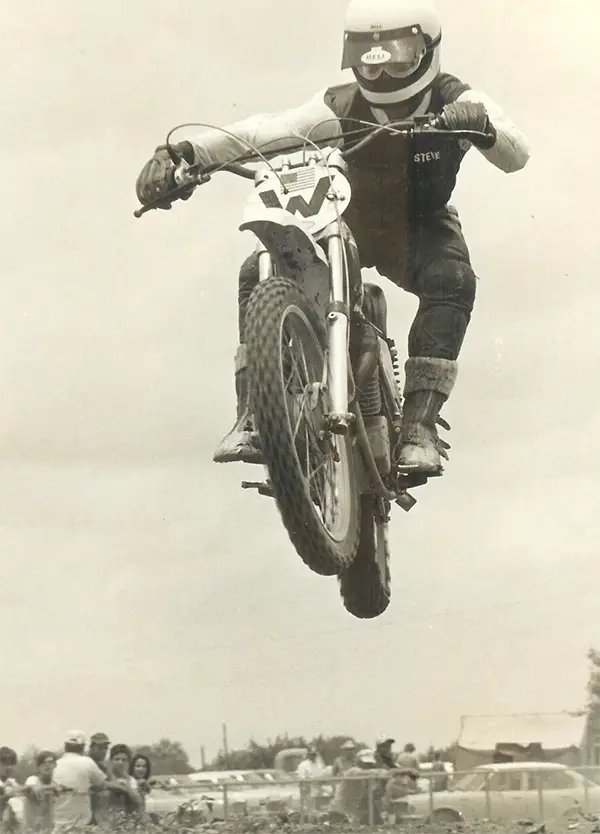
The 1975 racing season saw former Kawasaki-sponsored Jim Weinert going to Yamaha, and so the green team was looking for a rider. Kawasaki contacted Steve Stackable, but “Short Stack” had already signed with Maico. Stackable suggested that Kawasaki contact a young Texan who had been tearing up the 125 Expert class, telling them, “You’ve got to see this kid ride!”
And so, in December of 1974, Kawasaki flew Steve and his father to California, where Steve was given one of Swedish rider Torlief Hansen’s factory KX’s on which to compete in the 250 pro class at Carlsbad raceway. With no experience on the bike whatsoever, the 16 year old finished in 6th place that day, and Kawasaki hired him on the spot.
Riding a production 250 for Kawasaki, with modifications such as a Bultaco front end, Steve posted some good results in Supercross, including a 4th place at Texas Stadium Supercross in Dallas. However, things didn’t go as well with his works 125, which Steve recalls as handling well, but way down on horsepower. “Simply put,” Steve says, “it was very slow”. Steve was still posting results in the top five, but Kawasaki was disappointed with how the bike was working and pulled out at mid-season, leaving Steve without a ride.
Noting that Marty Smith was cleaning up in the 125 class on his Honda, Steve turned back to a privateer 125 Elsinore. On it, he regained his speed, and recalls among his successes in the latter part of that season of leading Marty Smith for all but the last five minutes at the San Antonio 125 National.
For 1976, Kawasaki wanted Steve back, and promised that this time the bikes would be fast. Steve agreed to resign, but in the first race of the season found that his works 125 was still not competitive. He was so disappointed, that he immediately quit the team and went back to his privateer Honda. This was the first year that Bob Hannah appeared, riding the water-cooled factory Yamahas, and was untouchable the first half of the season.
However, at the July 4th 125 National, held at Keyser’s Ridge, Maryland, privateer Steve Wise won the event, with Marty Smith 2nd, and Bob Hannah 3rd. Steve very modestly describes that a major factor in his win was the “exceptionally smooth” track that day, as this was the only way he was able to stay ahead of the factory bikes, with their considerably superior suspension systems. This was the first time a privateer won a 125 outdoor national and since that day back in 1976, a privateer victory in an outdoor national has only happened two other times. One of those was by Mugen-sponsored Johnny O Mara and the other was by John Dowd on his home track, during a mud-infested day in the North East.
Running a limited schedule, and making only about half the races, Steve still finished 4th in the ’76 125 National Championship standings. Throughout that year, Steve had hoped to pick up support from Honda, and because the Smith, Hannah battle was raging, Honda flew Steve to Buchanan, Michigan (a round he otherwise would have missed) hoping for him to play the role of a spoiler for Hannah. They provided him a modified CR 125 to ride, but Steve found the bike to be much less competitive than his own Jimmy Strait-prepared 125, on which he had won the Maryland round earlier in the year.
Steve heard nothing from Honda for the ’77 season, but was instead contacted by Motocross Fox, who was assembling a substantial team. Steve teamed with mechanic Cliff White, and once again using a Honda – modified with a trick frame, Simmons forks, and a special pipe, made a full assault on the 125 nationals.
Steve did very well with this combination, posting strong, consistent finishes including several 2nd places, and ended up 3rd in the points. Support from Honda finally materialized as well, which included them providing Steve with the use of a Mugen motor. Then at the end of the year, Steve was signed on as a full factory Honda rider for 1978.
Honda’s team for that year was huge, with Steve and Warren Reid on 125’s, Jim Pomeroy, Marty Tripes, and Jimmy Ellis on 250’s, and Marty Smith and Tommy Croft on 500’s.
Broc Glover and his Yamaha were the fastest combination in the 125 class, and Steve worked hard to be competitive. Improvements came slowly, such as dispensing with Honda’s unsuccessful application of a 23-inch front wheel. They also received a new cylinder and pipe, which helped Steve’s results to gradually improve toward the latter part of the season.
For ’79, Steve was not only back with Honda, but also moved to California to live and train with Marty Tripes. It was Honda’s idea for Steve to encourage Tripes to train, who was notorious for not doing so. However, Steve recalls Marty as being an incredibly skilled, natural rider, who so influenced Steve during their many practice sessions together that Steve was encouraged to alter his riding style.
During the winter of ‘78/’79, Steve trained and practiced very hard, and began the season fit and well prepared. Steve was scheduled to ride the Supercross series and the 125 outdoor nationals again that year. He started out very well, with a 3rd place finish in the first Supercross event at the Oakland Coliseum. Then, after Jimmy Ellis hurt his knee, Steve was moved up to the 250’s. Aboard the bigger bikes Steve posted good results, finishing 3rd in the 250 National series and on his birthday edged out Jimmy Weinert for the win in the New Orleans Super Dome. It was at the ’79 Superbikers event in Carlsbad, California however, that Steve’s career took an unexpected step forward.
The Superbikers events were an attempt at pitting the best riders from different forms of motorcycle racing against one another, in a format that would provide the opportunity for their varied skills to be applied equally. The challenge however, was to prepare a machine which would work acceptably well in both the pavement and the off-road sections of the course. Steve adapted well, and was initially very competitive, but his Honda’s outdated drum brakes failed after just two laps, which spoiled his chance for a strong finish.
With hopes for an even better 1980 season with Honda, Steve once again trained very hard, even going to Japan over the winter, hoping to help prepare the bikes. Steve felt that ’80 really should have been his year, as he was often the fastest rider on the track, but the new RC250 Pro Link had some reliability problems. With a 10 second lead in the Atlanta supercross, the bike’s rear wheel exploded. Then, at the LA Coliseum, coming from way back in the pack and closing fast on leader Broc Glover, the front wheel exploded. Still, with other strong finishes, and despite a knee injury at the Houston Astrodome Supercross, which forced him to sit out three rounds, Steve did well for the season.
Once again it was at the Superbikers race that year where Steve was exceptional. He was clearly the fastest rider on the pavement, and was running off with the event when, five laps from the finish, lost his rear brake. The reigning 500cc World Motocross Champion Andre Malharbe, on another factory Honda was running second and moved in to try taking the win away from the young Texan, but with a tremendous display of tiresliding control, Steve managed to hold him off, thus posting his first Superbikers victory.
Steve remembers 1981 as a year when he was not as well prepared physically as in years past. His results were not to his expectations either, as his bike broke frequently and he suffered several injuries. The highlight of the year for Steve was his epic race with Bob Hannah, at the Unadilla 250 GP. Steve recalls that he and Hannah dueled with one another throughout the entire event, and both crashed in the final laps of the first moto. With Steve and Hannah down, Donnie Hansen, on another factory Honda “was given a gift”, in the form of the first moto win, but Donnie crashed out in moto 2, costing him a chance at the overall. . After his fall late in the first moto, Steve eventually finished 4th. Steve says,after another incredible duel with Hannah, he eventually won the second (moto) convincingly, and recorded a 2nd for the day, leading him to consider this as one of his most memorable events.
Steve dominated the 1981 Superbikers race, and at the end of the year, was taken totally by surprise as Honda’s offer was for him to go road racing. Honda’s road racing star, Freddie Spencer, was going to Europe, and they were looking to supplement the existing U.S. team of Mike Baldwin and Roberto Pietri. Steve tested at Willow Springs, on Freddie Spencer’s1981-series Superbike. The day was cold and Steve did not feel that he went all that fast, but at the end of the session was told that he had run within six seconds of the track record. . There were other options on the table for him, as Husqvarna wanted Steve to sign on to race the World Championship motocross GP’s in Europe, and talks with Suzuki were in the works as well, but his pavement deal to ride for Honda was the choice he made for the 1982 season.
Steve actually began the 1982 AMA Grand National season by riding the series-opening TT and Short Track events, at the Houston Astrodome. Steve could not have been in a less likely position to do well at Houston. He was not experienced at dirt track racing, his CR500-based Honda was a departure from “traditional” short track and TT machines, and Steve was quite ill, right up to the time of his events. Despite all this, and although he had to start the TT main event from the last row as the result of his transfer from the semi, Steve’s performance was nothing short of astounding. Using a motocross riding style in the TT, Steve was squaring off the turns, block passing other riders, and jumping well over the heads of his competitors over the jumps. Many of the other riders were furious, but the fans loved it. Steve was clearly the crowd favorite, and was closing in on the leaders, threatening to take the win.
With two laps to go, Steve had caught leader Ricky Graham, and looked prepared to sweep into first place. Then, incredibly, his rear brake’s anchor rod broke, totally disrupting Steve’s ability to ride the track, with only the front brake. Although Mickey Fay got back by for 2nd, Steve managed to hold onto 3rd place in the national, an incredible finish.
At Daytona, Steve ran a smooth and consistent race and exceeded everyone’s expectations by finishing the 200 in 7th place against the world’s best road racers, despite riding a yearold bike and once running off the track during the event. And, combined with his strong finish at Houston, Steve left Daytona with first place in the GNC points chase.
Gene Romero, who was Honda’s Class C team manager, was begging Steve to ride the entire Grand National Championship circuit, along with Mike Kidd and Terry Poovey. Steve was especially tempted by this prospect, and to this day feels he should have taken Romero up on his offer. Steve feels he could have had a chance at winning the GNC title, since he would have been able to campaign both the dirt track and pavement events. However, with such a full plate already, he opted to concentrate strictly on road racing.
Steve’s ’82 season on the roadracers went extremely well. He tallied consistent top finishes, and nearly won the Formula One Championship, losing out to teammate Mike Baldwin by just one point. He did win Rookie Of The Year honors, as well as being named the AMA’s Professional Athlete Of The Year. Steve is particularly proud of the latter honor, considering that in the same year, Brad Lackey and Danny LaPorte won the 500 and 250 world motocross championships, respectively.
Steve started out 1983 with even more improved performances on the pavement, finishing the Daytona 200 in 3rd place, bested only by Kenny Roberts and Eddie Lawson. He went on the win the Mid-Ohio event, and closing in on the end of the season, was leading the Formula One championship. Steve then crashed hard at Road America, and in his desire to secure the championship, came to the Laguna Seca round still injured, and there crashed very hard, this time suffering serious injuries. While recovering, Steve wrestled with the difficult decision of whether or not to continue racing. He still had more than two years left on his existing contract with Honda, but despite his tremendously strong performances, felt his drive to compete was diminished. He had a long talk with team manager Udo Getdl, and concluded it was time for him to throw in the towel on his professional racing career.
Reflecting on his unprecedented successes at the highest professional levels in both motocross and road racing, Steve attributes much of it to an improved state of mind, which came about for him in 1981. Steve was going through a difficult time at this point in his life and his career, but was able to find his way through with an incredible change in his outlook of life. He had a strong conversion to Christ earlier in the year. Then, following his retirement from racing, Steve expanded on his knowledge by attending Bible College, and becoming an ordained minister. He has since traveled the world, sharing with thousands, his faith, and conversion to Jesus Christ.
Today, Steve is still involved in ministry and has established Steve Wise Investments, in the business of commercial real estate. He is also a private pilot and owns a Bonanza F- 33, which he loves to fly. He has not been active with motorcycles for some years, but attends a few Pro races each year. Like many of us, he feels he has put on a few too many pounds, but stays active by maintaining a single digit golf handicap.
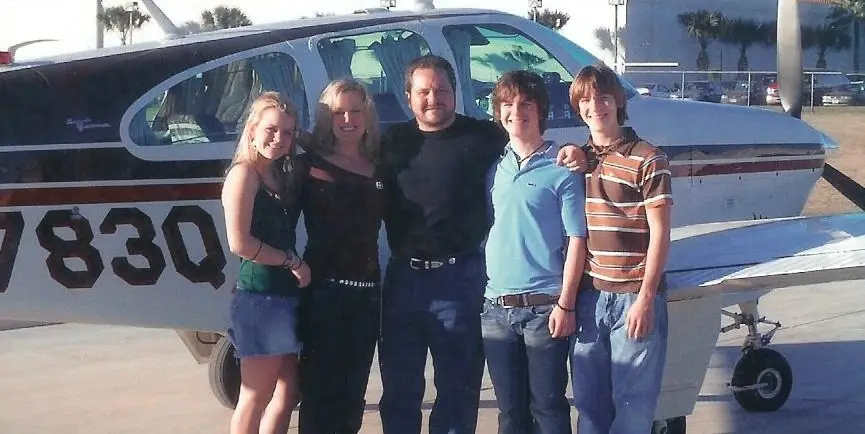
In 2003, Steve was invited to Glen Helen Raceway in California to compete in a vintage pro motocross. He was provided a 1973 Honda CR250, and would be going head to head in two 20- minute motos, against such veterans as his old friend, Kent Howerton. Steve’s two sons were extremely excited to see their Dad race for the first time, but he cautioned his children before the event not to expect too much from “old Dad”. “I told my boys that I knew I would not win, but also promised them I would not finish last.” Steve recalls.
Surprising everyone however, particularly himself, Steve got the holeshot in the first moto and stayed at the front of the pack for a while, eventually finishing 4th! He ran just as well in the second moto and, just a few turns from the end, was waved into 3rd place by the rider he had been pursuing. Steve says he was so tired at that point that there was no way he could have made a run at the other rider. However, the other fellow must have been just as worn out, and decided to let Steve by. Steve’s amazing performance brought him 3rd overall, proving that his speed and talent are still intact.
Although his professional career was spent racing for Team Honda Steve holds a great fondness for his Penton Six Day motorcycles, which he attributes to getting him started on his path to great success. Steve’s good friend, Ron Carbaugh, who himself spent a number of years working within the Honda racing department, has now turned his allegiance to Pentons, and recently located and restored one of Steve’s original Six-Days race bikes. Steve recalls that “The Sheriff” may have since then offered to sell him the bike, but he is not sure, and will have to check into it more.
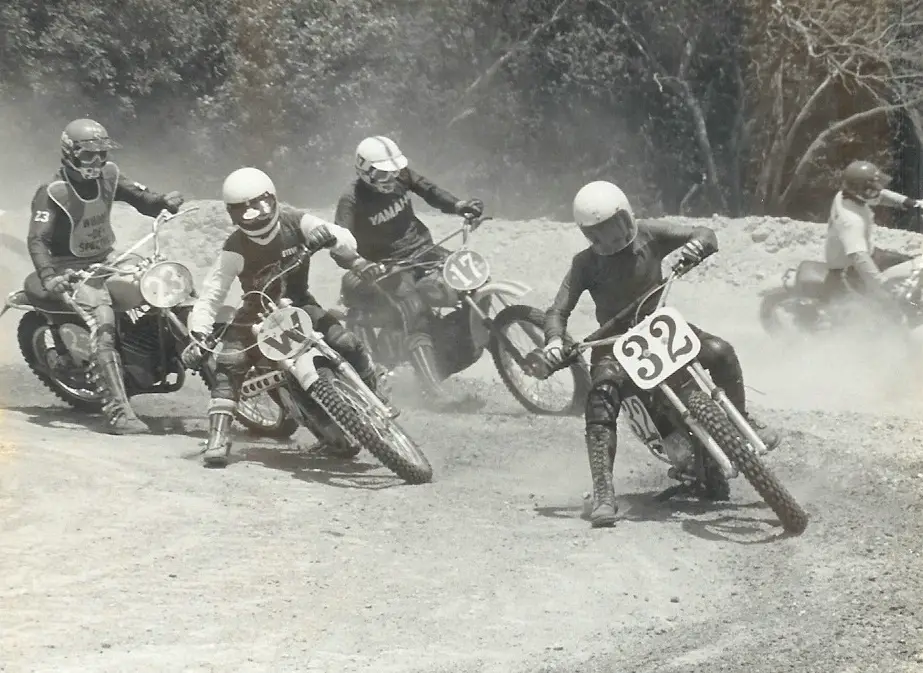
Steve also feels very honored to have been inducted, in 2001, into the AMA’s Motorcycling Hall of Fame. During the induction ceremonies, Steve took some time to recount his professional career to the audience. However, noticing that John Penton was among those present, Steve purposely refrained until the very end of his speech, from mentioning how his father had become a Penton dealer in order to further Steve’s racing career. At that time he thanked Mr. Penton personally for having produced such a fine piece of equipment, and for having contributed much to his racing success.
It seems only fitting for someone with such tremendous talent and versatility as Steve Wise, to have risen to racing prominence aboard Penton motorcycles, which also are so well known for their capability and versatility. Penton Sportcycles truly were, “Built For Champions.”
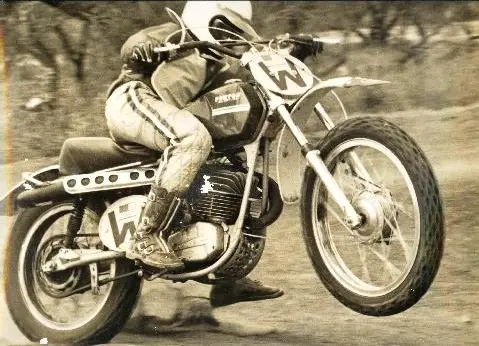
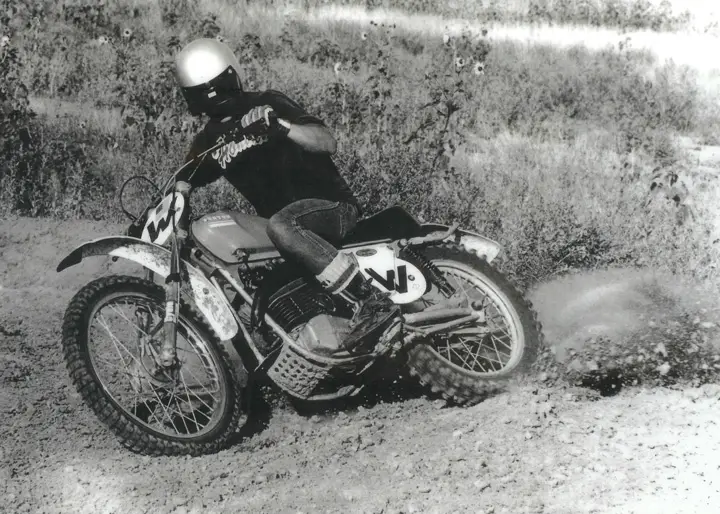
photos provided by Steve Wise


